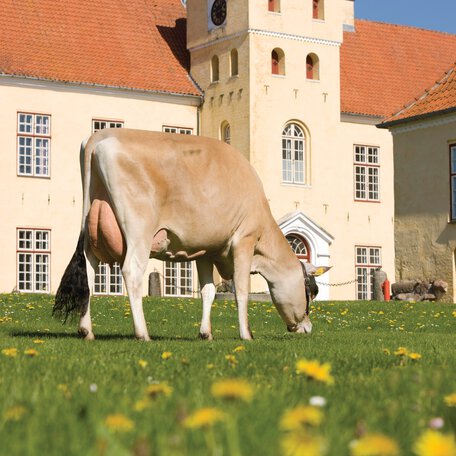In cases of overcrowding, opportunities for the cows to fulfil their need to lie down will be affected. Studies show that the behaviour of lower ranking cows is already significantly altered with an occupancy rate of 125%. As a result of a lack of rest, stress levels in the animals increase.
The negative effect on reproduction caused by chronic stress is measurable in terms of weaker heat behaviour, increased number of days from calving to first insemination and from calving to pregnancy, increased number of services per pregnancy and less viable embryos.
Heat stress in cows results in weaker heat behaviour and more services per pregnancy.
Finding the problem
A simple count of cubicles and animals / measuring the area available to the animals, will show if the occupancy rate is acceptable. For the new calver and yearling groups, you also need to pay attention if new animals are continuously being added to the group as this will lead to a continuous new hierarchy. In this case, the stress level in the animals will increase unnecessarily.
Visible signs of heat stress are changes in the cows behaviour that will manifest themselves as early as temperatures of 22-23 degrees, combined with high humidity > 80-85%.
Causes
Whether an egg is released from the cow’s ovary and is ready to be fertilised, depends on a combination of various hormones. Stress will disturb the mechanisms that regulate the timing of various stages in hormone related preparation for fertilisation and that affect physical, psychological and physiological stress stimuli (chronic / acute).
Heat stress can affect reproduction in two ways. One is a direct result of abnormally high body temperature when secreting the reproduction hormones, the other is an indirect result from reduced feed intake and a prolonged negative energy balance.
Action plan
With regard to production and welfare, there are many reasons why the occupancy rate should not exceed 100%. Identify the cows that need to go.
To reduce the negative effect of heat stress, the cows can be cooled by fans and sprinklers. In addition, offer them high quality roughage to improve their appetite.
Focus areas
- One cubicle per animal / sufficient space in group pens
- Layout of beds + alleyways allowing free access by cows and heifers to beds, fodder board and water.
- Adding new animals to the groups of new calvers and yearlings
- Reduce heat stress
Source: SEGES, Denmark
